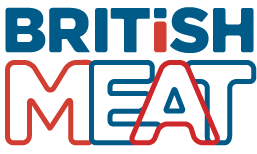Sustainability
Carbon neutral beef and sheep production. How is that possible?
New evidence suggests we may want to adjust the well-known saying to: ‘have your beef and eat it’.
A study just published by Auckland University of Technology proves that New Zealand sheep and beef farms are already close to being carbon neutral. This is big news and it demonstrates that predominantly grass-fed livestock systems like those in New Zealand, the UK and Ireland have a very different carbon footprint to those that rely on clearing rain forest. It proves that not all beef and lamb is equal.
It also goes a long way to reassuring us that we as consumers have it in our power to reduce our personal carbon footprint whilst continuing to benefit from the unique nutritional contribution that fresh meat makes to our health. We just need to know we’re buying the right meat.
The basic principal revolves around measuring not just the emissions from sheep and cows, but the amount of carbon that this kind of farming removes from the atmosphere and stores either underground in the soil or as part of the grass and native vegetation that farmers are encouraged to grow on their land.
Carbon emissions versus carbon sequestration
In other words, it’s a two-sided equation which often gets lost amid media coverage that just focuses on what animals breathe out. Actually, it can be argued that it’s a three-sided equation if you count the improved biodiversity, soil erosion management and water quality mitigation that this kind of farming also brings.
The study estimates that between 63% and 118% * of on-farm agricultural emissions are being offset by the carbon sequestration achieved through properly managed pastureland that has the right mix of grass and other native vegetation. That means some farms are already removing more greenhouse gas than they emit.
* Often an asterisk like this leads to a note that qualifies a big claim with a caveat. This one, however, is here to highlight the fact that those numbers you’ve just read likely under-estimate the amount of carbon offsetting. This is because the researchers chose to use the GWP100 metric to estimate emissions which doesn’t take into account the short-lived nature of methane compared to Co2.
Methane from ruminants disappears completely from the atmosphere within 12 years whereas Co2 (from cars for example) doesn’t; it just builds up. Cows and sheep don’t emit carbon dioxide, they emit methane.
There is a new and much more accurate method of measuring the relative impact of methane emissions, developed by scientists at Oxford University called GWP*. If that metric had been used, the carbon offsetting picture would look even better.
Why not just grow trees?
Simply substituting cows for trees is too simplistic. In New Zealand and the UK, we would be removing a highly efficient way of turning our natural resources (grass and rain) into a nutrient dense, local food source. If we did it while the majority of the population still includes meat as part of a balanced, healthy diet, we would still need to import it from elsewhere in the world where farming methods aren’t so efficient and environmentally friendly.
Farmers are the custodians of a large percentage of land which needs properly managing to ensure it becomes an efficient ‘carbon sink’; and a combination of managed grazing plus allowing a diverse native vegetation to flourish means we can balance profitable food production with environmental benefits. This is good for public health, good for the economy and good for the planet. It also goes a long way to solving the vexed question of self-sufficiency which the Covid crisis has highlighted as something we definitely don’t want to erode.
